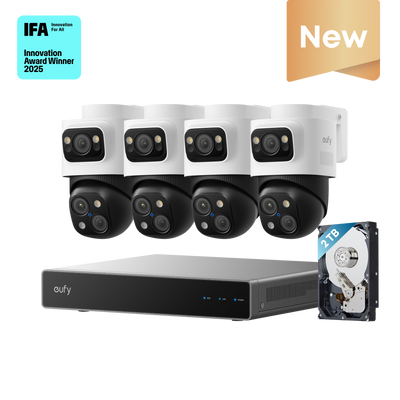Workplace violence is a serious and complex issue affecting businesses across the United States. It ranges from verbal threats to physical assaults and even homicide. For any business, understanding the risks and knowing what actions to take is not just a good idea; it’s a fundamental part of protecting your people and your organization.
What is workplace violence?
When people think of workplace violence, they might picture a dramatic, headline-grabbing event. The reality, however, is much broader. Federal agencies like the Occupational Safety and Health Administration (OSHA) and the National Institute for Occupational Safety and Health (NIOSH) define it as any act or threat of physical violence, harassment, or intimidation that happens at a work location or while an employee is on duty.
It can look like many different things: a shouted threat from an angry customer, bullying between coworkers, a physical fight, or a robbery that turns violent. The impact can be devastating, leading to physical injury, lasting psychological trauma, and in the worst cases, death. It’s a problem that touches every industry and requires a thoughtful, proactive response from business leaders.
The Status Quo of workplace violence in the US
The numbers tell a sobering story. Workplace violence is not a rare occurrence; it's a persistent threat.
Let's look at the most severe outcome first: fatalities. In 2022, the U.S. saw 524 workplace homicides, a number that has been climbing and is the highest it's been in over a decade. A staggering 83% of those deaths were the result of gunshot wounds, highlighting the lethal nature of many of these incidents. These are not just statistics; they are people who went to work and did not come home.
Beyond the fatalities, nonfatal violence affects tens of thousands of American workers each year. Over the 2021-2022 period, there were more than 57,000 cases of intentional injury from another person that were serious enough to require an employee to miss work or have their job duties restricted. For many of these injured workers, recovery is not quick. The median time away from work was a full week, which points to the severity of the physical and emotional harm inflicted.
The data also reveals that certain groups are hit harder than others. Nonfatal violence disproportionately affects women, who made up 73% of the victims in 2020. The healthcare and social assistance sector is a major hotspot, accounting for an incredible 76% of these nonfatal incidents. On the other hand, fatal violence most often targets men, who accounted for 81% of homicide victims. There's also a tragic racial disparity, with Black or African American workers representing over a third of all homicide victims, a rate far higher than their share of the workforce. These patterns show that workplace violence is not a one-size-fits-all problem.
What is a trigger for workplace violence?
Violent incidents rarely happen out of the blue. They are often the result of escalating pressures, conflicts, or stressors. Understanding these triggers is key to spotting warning signs and intervening before a situation turns dangerous.
Some triggers are rooted in the work environment itself. A job layoff, a termination, or even a disciplinary action can be a catalyst for some individuals. Ongoing issues like high job stress, a perception of unfair treatment, or poor management can create a tense atmosphere where conflicts can easily ignite. Think about a customer service setting. Long wait times or frustration with a product can cause a customer to become aggressive. In a similar way, unresolved disputes between coworkers can simmer for weeks or months before boiling over.
Other triggers come from an individual's personal life. Stressors like financial trouble, divorce, family problems, or substance abuse can spill over into the workplace. An employee dealing with immense personal pressure may have a shorter fuse or behave erratically at work.
Often, people who are heading down a path toward violence show warning signs. These can include:
- Sudden changes in behavior, mood, or personality.
- A noticeable decline in their work performance or personal hygiene.
- Becoming extremely sensitive to criticism or blaming others for their problems.
- Making direct or indirect threats, like saying things such as "You'll be sorry."
- An unusual interest in weapons or past violent events.
Recognizing these signs isn't about profiling anyone. It's about being aware of distress. A supportive workplace that encourages employees to get help through programs like an Employee Assistance Program (EAP) can be a powerful tool for prevention.
Types of workplace violence
To tackle the problem effectively, it helps to break it down. NIOSH classifies workplace violence into four main types based on who the perpetrator is. Each type has different motives and requires a different prevention strategy.
- Type I: Criminal Intent. In this case, the perpetrator has no connection to the business. They are there to commit a crime, like a robbery or theft. This is the type of violence that most often leads to a worker's death.
- Example: A person enters a convenience store late at night with a weapon to rob the cash register.
- Example: A home health aide is mugged in a parking garage after leaving a patient's apartment.
- Type II: Customer/Client. Here, the perpetrator is a customer, client, or patient of the business. This is the most common type of workplace violence, especially in certain industries.
- Example: A patient in an emergency room, confused and agitated, strikes a nurse who is trying to help them.
- Example: An angry airline passenger, upset about a delayed flight, shoves a gate agent.
- Type III: Worker-on-Worker. This violence occurs between coworkers. It can be a current employee or even a former employee who holds a grudge. It includes everything from bullying and intimidation to physical fights.
- Example: A supervisor constantly belittles and verbally abuses an employee in front of others.
- Example: Two employees get into a physical altercation in the breakroom after a long-running argument.
- Type IV: Personal Relationship. This happens when a personal conflict from outside of work enters the workplace. The perpetrator is not an employee but has a personal relationship with one, like a spouse or partner.
- Example: An employee's abusive ex-spouse shows up at their office, threatening them and their coworkers.
- Example: A person repeatedly calls and harasses their partner at work, disrupting the office and creating fear.
Who is at risk of workplace violence?
While violence can happen in any job, some workers face a much higher risk than others. The danger is not spread evenly across the workforce. The factors that increase risk often involve the job duties, the work environment, and the time of day work is performed.
Certain occupations consistently top the list for high risk. These include workers who:
- Exchange money with the public: Retail clerks, cashiers, and bank tellers are frequent targets for robberies.
- Work with volatile people: Healthcare professionals, especially those in emergency rooms and psychiatric facilities, face a very high rate of assault from patients. Social workers and public service employees also fall into this category.
- Work alone or in isolated areas: A lone worker is a more vulnerable target. This includes home healthcare aides, utility workers, and real estate agents showing properties.
- Work late at night or during early morning hours: Gas stations, convenience stores, and bars are at a higher risk during these times.
- Deliver passengers or goods: Taxi drivers, ride-share drivers, and delivery workers are at risk of robbery and assault.
As mentioned earlier, the healthcare and social assistance industry is ground zero for nonfatal violence. The rate of violent incidents is dramatically higher here than in any other sector. Workers in these fields, who are predominantly women, are on the front lines of patient care and often deal with people in distress, pain, or crisis, which can lead to unpredictable and violent behavior.
For fatal violence, the picture is different. The highest risk falls on workers in protective services, transportation, and sales-related jobs. These roles often put employees, who are predominantly men, in public-facing situations where they may be caught in a robbery or other criminal act.
How to reduce & prevent workplace violence
Preventing workplace violence requires a dedicated and systematic effort. A company can't just hope it won't happen. It needs a plan. OSHA recommends a program built on four key elements, which together create a strong defense.
First is management commitment and worker involvement. The leadership team has to set the tone. A clear policy that states violence will not be tolerated is a must. But it's more than just a policy; it's about actively creating a culture of safety. Workers must be involved in the process. They know the risks of their jobs better than anyone. They should be encouraged to report concerns without any fear of getting in trouble.
Second is a thorough worksite analysis. A business needs to look closely at its operations to figure out where the dangers are. This means reviewing past incidents, inspecting the physical location for security weaknesses like poor lighting or blind spots, and talking to employees about what they think are the biggest risks.
Third, and most importantly, is hazard prevention and control. Once a business knows its risks, it can take concrete steps to fix them. These steps can be broken down into two main types:
- Changes to policies and procedures (Administrative Controls): A company can also change the way people work to lower risk. This could mean increasing staffing during late-night hours, using a "buddy system" so no one has to work alone in a risky situation, or setting up clear procedures for handling cash.
- Changes to the physical environment (Engineering Controls): These are some of the most effective measures. They include things like installing better lighting, video cameras, and alarm systems. In high-risk retail settings, using drop safes to limit cash on hand or installing bullet-resistant barriers can be life-savers. A system like the eufy PoE NVR Security System S4 Max provides high-definition video surveillance that helps eliminate blind spots and enhance security, ensuring continuous monitoring of critical areas.
| Feature | Description |
|---|---|
| 16 MP Triple-Lens Bullet-PTZ Camera | Provides 4K wide-angle and 2K PTZ cameras to monitor and track any potential violent incident across large areas. |
| Auto-Framing and Group Tracking | Automatically detects and follows subjects, ensuring continuous coverage of possible violent situations, even at a distance. |
| Live Cross-Cam Tracking | Multiple cameras work together in real-time to track movement across the premises, ensuring no blind spots during potential incidents. |
| AI-powered Local Agent | Uses local AI to proactively identify threats and create customized alerts, enhancing response to violent events. |
| Smart Video Search | Quickly locate specific footage related to incidents or threats by searching using keywords, saving valuable time in emergency situations. |
| Expandable Storage (2TB to 16TB) | Offers large storage for long-term video retention, useful for reviewing security footage after an incident for investigation or legal purposes. |
| 24/7 Recording with PoE | Ensures continuous surveillance with Power over Ethernet (PoE) for uninterrupted video recording, even during critical hours. |
| Long-Range Wireless Connectivity | Offers coverage across large areas, ensuring that even distant or remote parts of the workplace are constantly monitored for security threats. |
| Weatherproof (IP65 Rating) | Built to withstand various weather conditions, ensuring the system's reliability for outdoor surveillance of all areas of your business. |
| Two-Way Audio | Enables clear communication with employees, visitors, or remote monitoring personnel, allowing quick intervention when a security threat is detected. |

If you are looking for a diversified way to boost your security efforts and protect your workforce, don't miss out on the smart security solutions.
Fourth is safety and health training. Every single employee needs to be trained. They should know the risks of their job, what the company's prevention plan is, and what to do in an emergency. Training should cover topics like conflict resolution and how to de-escalate a tense situation with a customer or coworker. For jobs that face a risk of robbery, training should cover how to react to keep themselves safe.
The Bottom Line
Workplace violence is a significant threat with serious consequences for both employees and businesses. The data shows clear patterns of risk, with some industries and workers facing much greater danger than others. A passive approach is not enough. A proactive, comprehensive prevention program, built on management commitment, careful risk analysis, concrete hazard controls, and thorough training, is the most effective way to create a safer work environment. Protecting your team is one of the most important investments a business can make.
FAQs
Is my business legally required to have a workplace violence prevention program?
Currently, there is no specific federal OSHA standard that requires every business to have a program. However, under OSHA's "General Duty Clause," all employers have a legal obligation to provide a workplace "free from recognized serious hazards," and workplace violence is considered one of those hazards. OSHA can cite a company for failing to protect its workers. Additionally, some states have passed their own laws that do require specific programs, especially for industries like healthcare.
What is the single most important first step to take?
The most important first step is for leadership to make a firm, visible commitment to addressing the issue. Without buy-in from the top, any program is likely to fail. This commitment should be followed immediately with a worksite analysis to understand your specific risks. You can't solve a problem you don't fully understand.
Our employees are more at risk from angry customers than from crime. What should we focus on?
If your primary risk is Type II violence (from customers/clients), your focus should be heavily on training and operational procedures. Invest in high-quality de-escalation training for all front-line staff. Review your operational flows to identify and fix things that cause customer frustration, like long wait times. Also, a policy of empowering employees to call a supervisor or security for help is crucial.















